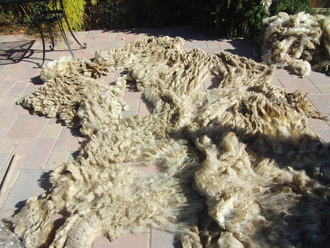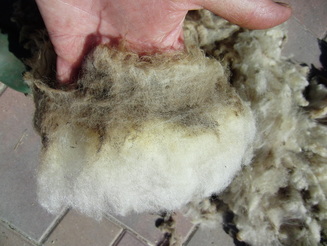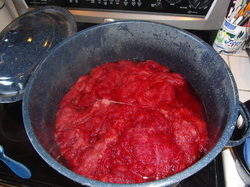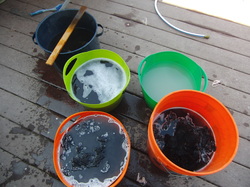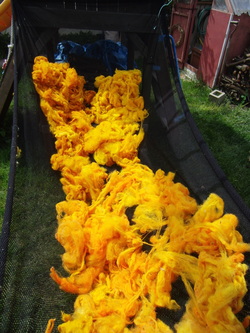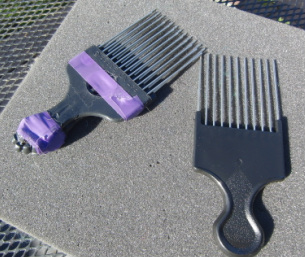Wool
Physics of wool
The main idea of felting depends on the scaly structure of wool (as with humanhair and all hair that grows). The scales allow you to have the fibers grab hold of each other tighter and tighter the more they get felted, wether by agitation/friction or with a felting needle with notches that grabs the scales.
The original sheep would shed their fur yearly. The fur would consist of a coat of guard hairs with the finer 'wool hair' underneath. Todays sheep have evolved through breeding and have more of the wool part, and need to be sheared or they would 'drown' in their wool and maggots might start living in their wool.
Different wool is characterized by:
- thickness/ diameter in microns
- crimp = waviness, which gives loft and bounce
- staple = length of the fibers
- lustre/shine
All that depends on the breed of sheep, there are hundreds, but, for example:
- Churro = coarse and long wool, used by Navajo in rugs and blankets
- Romney = main breed in New Zealand
medium thickness and average length
- Merino = the finest wool with a diameter of 15-25 microns, staple length 2-4 i
inches. Naturally white, soft, non itchy
The original sheep would shed their fur yearly. The fur would consist of a coat of guard hairs with the finer 'wool hair' underneath. Todays sheep have evolved through breeding and have more of the wool part, and need to be sheared or they would 'drown' in their wool and maggots might start living in their wool.
Different wool is characterized by:
- thickness/ diameter in microns
- crimp = waviness, which gives loft and bounce
- staple = length of the fibers
- lustre/shine
All that depends on the breed of sheep, there are hundreds, but, for example:
- Churro = coarse and long wool, used by Navajo in rugs and blankets
- Romney = main breed in New Zealand
medium thickness and average length
- Merino = the finest wool with a diameter of 15-25 microns, staple length 2-4 i
inches. Naturally white, soft, non itchy

